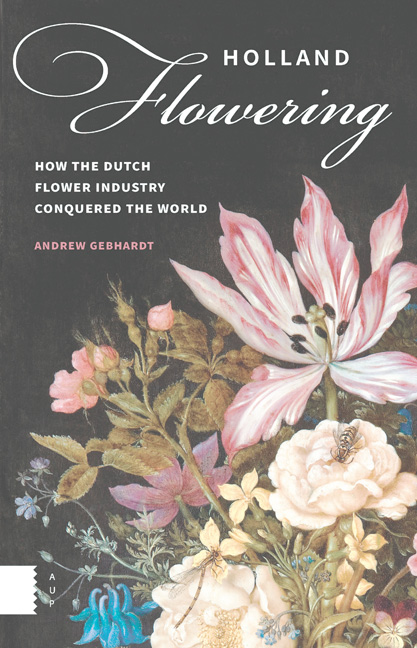Early Dutch Horticulture
Published online by Cambridge University Press: 10 December 2020
Summary
Why are the Dutch so successful with flowers? I don't know, really. But we have many generations, hundreds of years, of growing flowers and other things in these sandy, swampy little places. It's just what we do, I guess.
A trader at FloraHolland AalsmeerThroughout 2009, New York honored the four hundredth anniversary of Henry Hudson's arrival as captain of the Dutch ship, Halve Maen (Half Moon), on a journey sponsored, like many other colonial ventures of that era, by the Dutch East India Company, the Vereenigde Oost-Indische Compagnie, or VOC. Many celebrations commemorated New York's Dutch roots, including several tulip-naming ceremonies. In Manhattan's Battery Park, on the spot where the Half Moon landed, Princess Máxima dribbled champagne to baptize the bright orange ‘Henry Hudson’ tulip, and the royal couple presented the City of New York with a gift of 120,000 bulbs donated by the Flower Council of Holland, which Mayor Michael Bloomberg formally welcomed. Uptown, another tulip event honored the controversial former Netherlands parliamentarian, Ayaan Hirsi Ali. Born in Somalia, Ms. Ali obtained political asylum in the Netherlands in 1992 and made a successful career out of criticizing “Islam” as well as immigrants. In front of the Metropolitan Museum of Art, flanked by executives from Holland's flower bulb sector and Wim Pijbes, director of Amsterdam's Rijksmuseum, Ms. Ali christened a new black tulip, the Ayaan, which she herself helped select, and at the same time, one hundred Ayaan bulbs were commemoratively planted in front of the Rijks.
The tulip galas have hardly been confined to 2009 and New Amsterdam-New York related fetes. Tulip naming ceremonies have become regular events sponsored by the Dutch flower industry, particularly the bulb-growing sector, and are heartily endorsed by Dutch elites and the political class. In connection with Queen Beatrix's 2008 visit to Lithuania, for instance, the Dutch ambassador, accompanied by Dutch tulip cultivar Jan Ligthart, presented a tulip named for the Lithuanian First Lady, the Alma Adamkienė tulip. In 2004, Ligthart had also bred a pink and ivory tulip in honor of then U.S. first Lady Laura Bush, and this variety was grown by Aalsmeer's Blumex and sold at auction (though it was not too popular).
- Type
- Chapter
- Information
- Holland FloweringHow the Dutch Flower Industry Conquered the World, pp. 45 - 86Publisher: Amsterdam University PressPrint publication year: 2014



